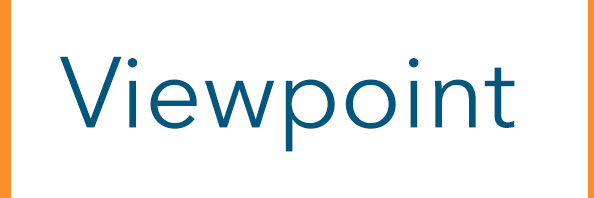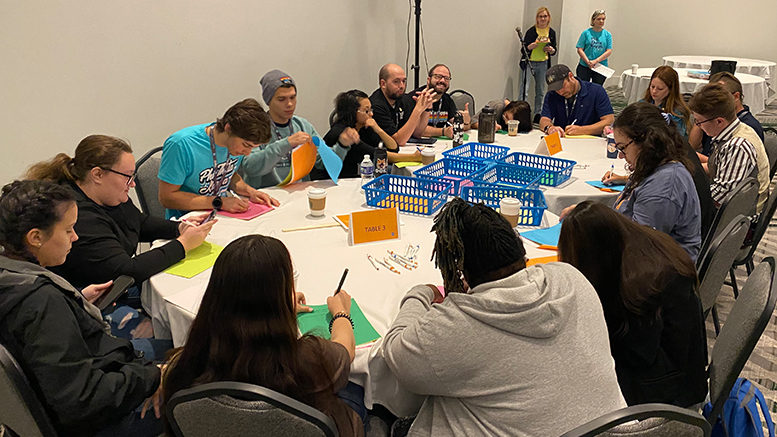One of the most important outcomes of attending the American Association of Community Colleges (AACC) Commission Meetings this fall was hearing directly from college leaders about their biggest challenges. These issues are not only impacting community colleges but are also driving the work of Phi Theta Kappa (PTK) to promote student success and student-led advocacy.

One thing I heard over and over was the challenge of retaining dual-enrolled students beyond their graduation from high school. It is well documented that dual enrollment has been a major area of growth for community colleges — climbing to 16% of enrollments nationwide. This makes the retention of dually enrolled students a natural area of focus to increase community college enrollment. The math is simple — if we keep them enrolled, we could potentially grow another 16%, instantly.
I brought this research question to PTK’s Regional Institute, an annual gathering of student leaders and advisors. I asked them about dual-enrolled students and what community colleges can do to hold on to this student population into community college beyond high school. They worked in small randomly assigned research groups and conducted interviews among the group. Here’s what they found:
Takeaway #1: Leverage community college faculty
Who hasn’t met a successful community college student that didn’t point to a faculty member (or two) as responsible for contributing to their success? The problem is most colleges utilize high school teachers, with appropriate credentials, as adjuncts to teach dual-enrolled classes. While these students may have a solid learning experience with this model, it doesn’t give the student any opportunity to connect with college faculty. For example, if a student takes Calculus I from someone and is successful, there is a strong likelihood they will show up on campus next year to take Calculus 2 — particularly if it’s the same person. Our students summarized the importance of faculty by saying, “Our professors are amazing, qualified and caring. They genuinely care that we learn and are successful.”
These same faculty members also need to be involved with their high school activities. Embedding community college faculty members into the culture and activities of the high schools where they teach dual-enrolled students creates meaningful interactions with parents and students. Attending football games, awards days, graduation, quiz bowl games and concerts increase community college awareness and demonstrates that community colleges are invested in the success of their students.
Takeaway #2: Combat community college stigma
Recent research tells us community college stigma plays a significant role in college choice — especially among high school students. Why is it worse now than 10 years ago? Over the past decade, the rapid growth of social media has made students way more visible than they used to be — particularly among their peers. Research also finds that many parents and influential adults contribute significantly to the community college stigma. While many recognize that community college is an affordable choice, the quality of community colleges is not always given equal consideration. Students at PTK’s Regional Institute described the problem like this — “Many parents think that community college is a good choice for other people’s children, but not their own.”
As the affordability of four-year universities and colleges gets further out of reach of many families, stigma is making community college a non-choice and it is something we need to address, early and often.
The student leaders at Phi Theta Kappa are excited to be working on CCsmart, or Community College Smart, a new advocacy campaign to combat community college stigma. Community colleges are quality institutions, and PTK members provide some of the best evidence of that quality. Our goal is to leverage the experiences and voices of our members to combat the community college stigma and advocate for the value of community college education among their peers and others. We plan to do this by equipping students to be advocates and by providing them with platforms and opportunities to elevate the value of their community college experience.
Related article: Transcending ‘great for you, but not for me’
Takeaway #3: Strengthen community at community college
Community colleges are wonderfully diverse. While that is a positive thing for student learning, it can also make it harder to find friends. In the national group of student leaders who participated in this conversation, only half knew (prior to enrollment) that community colleges offer rich opportunities for social interactions and student engagement in clubs and organizations. Community colleges are quality, affordable institutions of higher learning.
A great community college experience creates connections, offers a sense of belonging and leads to more successful outcomes. In addition to showcasing the quality and affordability that our colleges are so known for, we must be sure to bring the “community college experience” to these students while in high school.
Dual-enrolled students are a captive audience
Recruitment is more than the basic touchpoints — a single conversation, email or billboard message. It is relationship-building. The same can be said about retention. In the case of dual-enrolled students, half of the work is already done. In order to keep them, we all have to work to make their experiences less transactional and more transformational and collegiate. Provide them with opportunities to participate in clubs and organizations, invite them to participate in honor society inductions, and encourage them to get involved with service-learning opportunities and athletic events.
By enrolling in classes at your school, these students have demonstrated their intention to continue their education beyond high school. Consider them a captive audience. Recruit them, recognize their success and offer them scholarships. By doing this you will not only create graduates — you will create community college advocates.
About Phi Theta Kappa Honor Society
Phi Theta Kappa is recognized by AACC as the official honor society of community and technical colleges. Its mission is to recognize the academic achievement of students at associate degree-granting colleges and help them to their next steps in life. PTK comprises more than 4.5 million members and nearly 1,300 chapters in 11 nations, with approximately 240,000 active members in the nation’s colleges.





